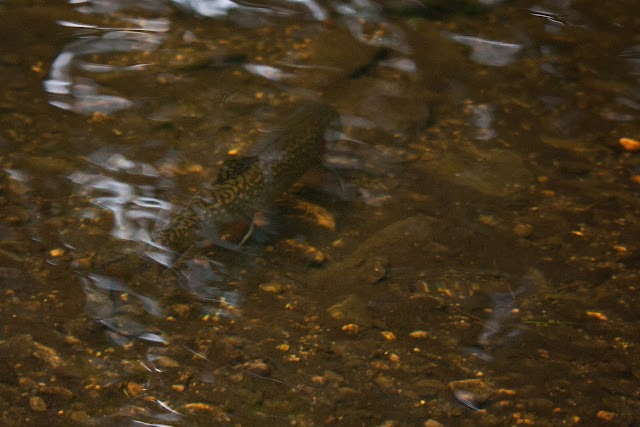Yesterday I made a trip to a remote trout pond in the White Mountains. At 2600', this is one of the highest elevation trout ponds in the Whites. Its waters are crystal clear with the blue-green tint characteristic of these high elevation ponds. Unlike most other remote ponds in New Hampshire, this pond is not stocked by helicopter. These trout are wild, spawning in the outlet stream and possibly around the numerous springs within the pond itself.
I arrived at the trailhead at 8:25 AM. No other cars in sight. Perfect.
I couldn't see what they were rising to, but I decided to try an Ausable Wulff. Armed with ym 2 weight, I waded into the shallow outlet of the pond and began casting. On the second cast I watched as a brookie rose from the depths, paused, then smashed my fly.
The next cast had the same result. It went on like this, with fish nearly every cast, until about 11 am.
I was worried that the bite may have turned off for the day, but I moved up the shoreline to a small tributary. The water in the pond was quite cold, probably somewhere in the upper 50s, but the water in the stream was frigid! It couldn't have been warmer than the low 40s.
Brookies were stacked up near the tributary - I caught at least 10 within a 50 foot radius.
I continued to catch fish after fish as I traveled around the pond. Every time I thought the fish had stopped biting, another fish proved me wrong.
I lost count of the fish I caught. It was easily 50, but it could have been 100.
The brookies destroyed my Wulff, so I moved on to a Light Cahill, but the brookies didn't mind the change.
It was an incredible day. Never in my life have I caught so many trout, and the fact that all came on dries is icing on the cake. I can't wait to head back again.






















































